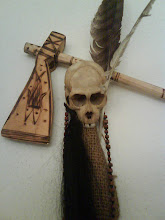Watching Hine
posted by feddabonn at 18:58 8 comments
long rope
posted by feddabonn at 22:43 4 comments
markets vs. culture
We stopped and watched a street musical performance today, by a chap playing the various Andean pipes in time to recorded music. Dressed in ‘red-indian’ outfits, with the feathers and the beads, one person played the pipes, while the other sold CDs of the same music. The Andean flutes played well are a treat to hear, and a must listen for anyone interested in softer music. There was no doubt, he played well. Among other pieces, he played Chiquitita, the old ABBA classic, and El Condor Pasa, a tune made famous by Simon and Garfunkel.
The performance tore my heart.
On the one hand (and this is going to be a post of many hands) the cultural observer in me laughs at the irony of a ‘native’ peddling music that is an indigenisation of an Americanised pop culture version of indigenous music. El Condor Pasa was popularised by Simon and Garfunkel, but was composed by Peruvian composer Daniel Alomia Robles. The version playing today, however, sounded (the guitar plucking) very much like the S and G song. The cultural observer in me also smirks a little unkindly at the use of the ‘feathers-and-beads’ artifice to attract tourist attention and make sales.
On the other hand, here are two young (?) men making honest money from tourists and ‘westerners’ who can well afford it. While there is artifice, it is not dishonest, and the artifice is no worse than the mildest advertisements we see on TV every day. In the best traditions of movie making, these two men were giving people what they wanted to see, and there is nothing wrong in that, is there? They are also being entrepreneurial, and avoiding dependence on taxpayer funded social security, if there is such where they come from. The artist in me knows how hard it is to make anything like a living from my art, and when I work for a corporation, am I not guilty of the same artifice, if not worse?
On yet another hand, it hurts me, as a tribal myself, that we are reduced to peddling our culture on the streets to make ends meet. While I understand very well the attraction of feathers and skulls (having a decent collection myself), I find their use in promoting some sort of ‘tribal’ exotica pathetic, if not downright offensive. Are cultures something to be so easily peddled on the street? I feel quite the same when I see young boys dressed as Krishna-avatar begging on the streets of Bengaluru. Interestingly, though the Zo are a very musical group, the khuang (drum) of tradition is still only used in church, maintaining, somehow its sacred quality, and is yet to be used in the production of commercial music.
Then again (that’s the fourth hand in case you’re counting) is it very different when the North East Indian tribes put on our costumes and ‘perform’ our dances on stage for fat-ass dignitaries to gawk at? However, as an urbanite who has grown up away from my tribal homeland, I would hardly even be aware of these aspects of my culture if it were not for these performances I am deigning to scorn! Aren't such performances keeping elements of our cultures alive?
I’ll stop at five hands- you probably get the idea by now. While I understand and promote the idea that culture is not static, it does concern me that the marketplace is increasingly imposing on cultural expression, and may one day soon completely take over. Aren’t there some things that should be kept sacred?
Maybe there is hope, though. On the way home, we saw another irony- three scruffy teenagers practicing their skateboard skills in the office building of a large insurance corporation. Hopefully, as the markets take over our cultures, we will continue to find points of resistance, and develop new cultural expressions that challenge their dominance!
What do you think?
posted by feddabonn at 19:07 1 comments
Labels: andes, culture, indigenous, markets, music, north east india, zo
another bottlebroke lamp
 ugh, the green-ness of the green bottlebroke lamps seems emphasised by white (warm) light! am glad, because the white lights, though a higher initial investment, seem to save a good bit of electricity. this is the same lamp i'd used on the bottlebroke tree- we had to abandon the wooden parts when moving to auckland. sigh.
ugh, the green-ness of the green bottlebroke lamps seems emphasised by white (warm) light! am glad, because the white lights, though a higher initial investment, seem to save a good bit of electricity. this is the same lamp i'd used on the bottlebroke tree- we had to abandon the wooden parts when moving to auckland. sigh.
posted by feddabonn at 16:06 3 comments
Labels: bottlebroke, lamp, picture





